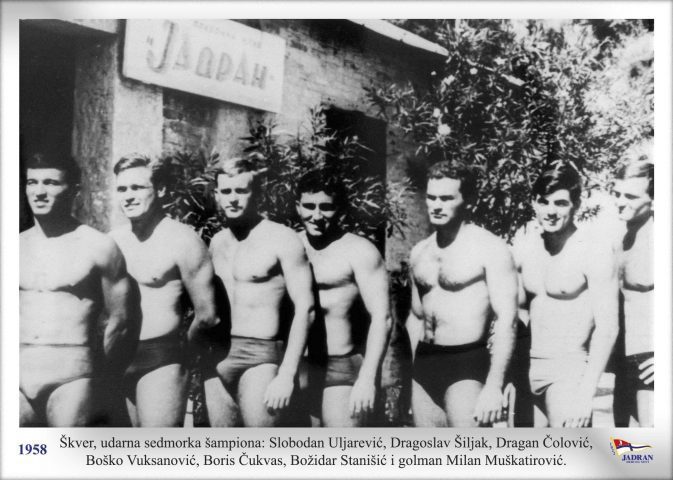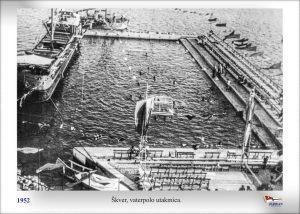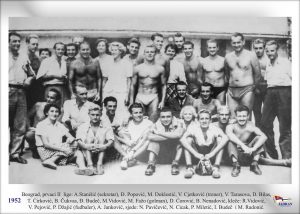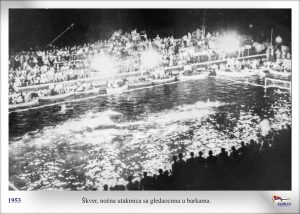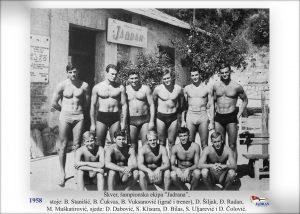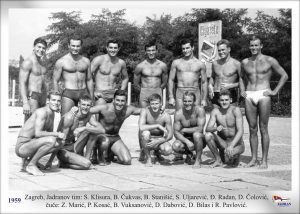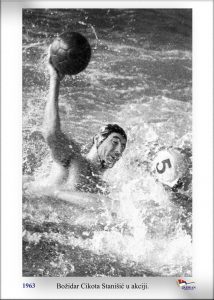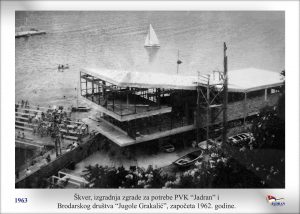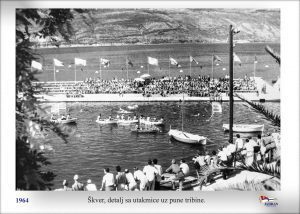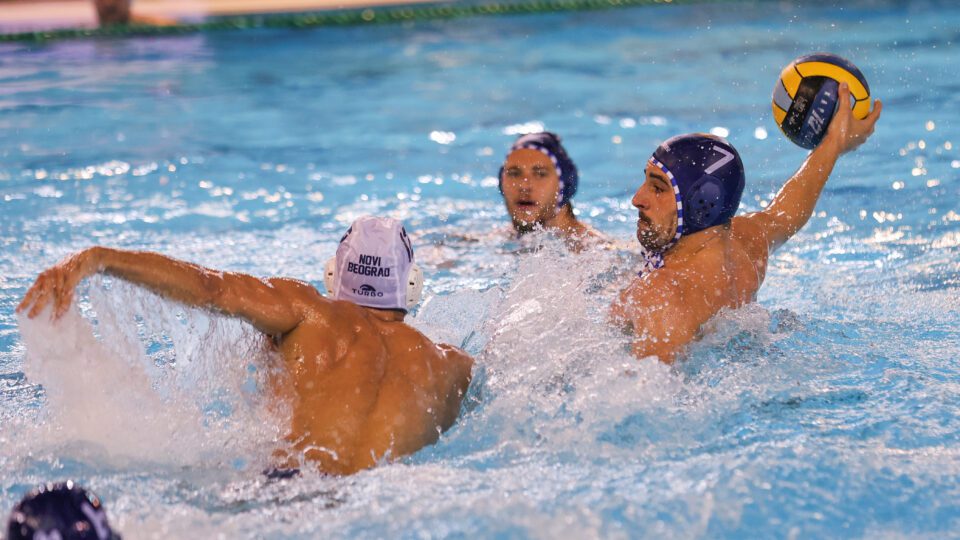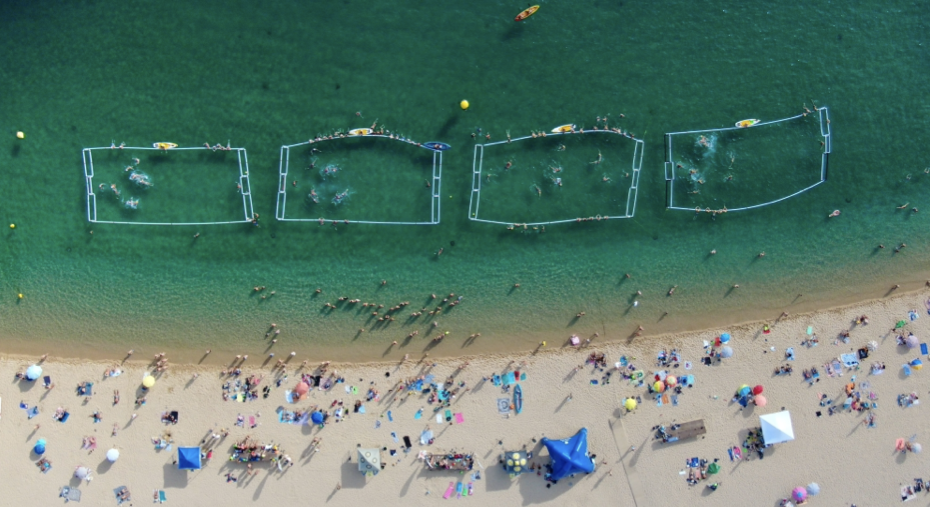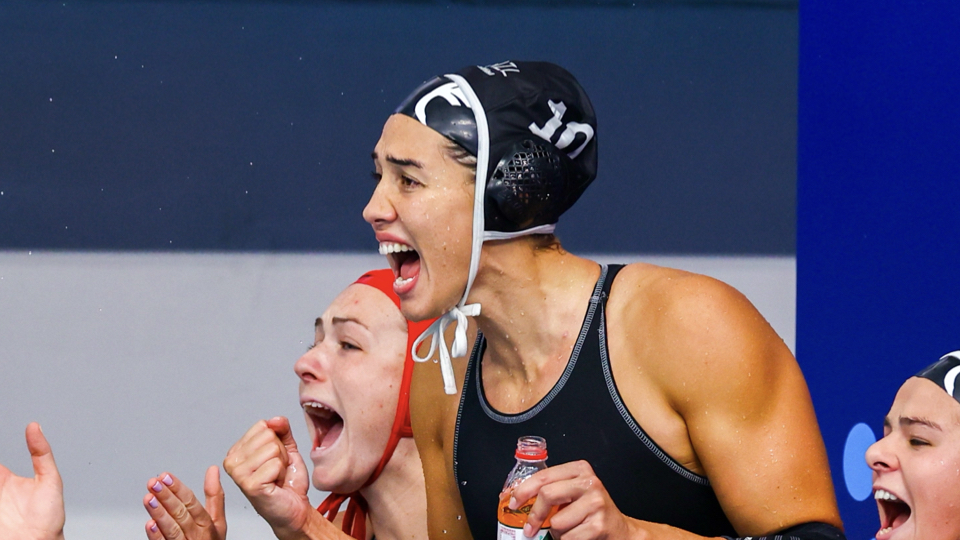Jadran Herceg Novi celebrates its 100th birthday this year. One of the best water polo clubs in the ex-Yu countries was founded in the summer of 1922.
On the occasion of the jubilee, Total Waterpolo will publishes the most interesting stories about Jadran’s history, written by Boro Mračević.
DECADE OF JADRAN’S GREAT SUCCESSES (1952 – 1961)
Jadran entered the fourth decade of its existence busy with extensive works on the swimming pool. Owing to its agile management, the funds were raised by the support of the broader community and donations from all over Yugoslavia, Jadran got a swimming pool with a dimension of 50 by 21 meters and eight race tracks.
As a part of the festivity held from 22nd through 24th August 1952, a memorial plaque commemorating all the members of Jadran who were killed during World War II was unveiled at the edge of the swimming pool. The plaque is now within the premises at the Škver.
The Club gained great popularity and had 112 active and 465 assisting members in 1952.
The work with competitors was getting better and better. Vinko Cvijetković was appointed coach of the first team and, together with his players, won first place in the Second League. Since then Jadran has constantly belonged to the first league for 70 years.
It is worth mentioning that the composer and bandmaster Ivan Bagatela composed the “Jadran’s March” to be performed by the Town Band, especially for this event.
In the next year, 1953, Jadran – now a first league team with the coach Lovro Štakula won 7th place, and in 1954 and 1955, supported by Milo Lučić as an experienced strategist, became the sixth.
These years, the first swimming star of Jadran was born: Vera Kosać. She was the first female swimmer of Jadran who met the qualifying standard for the Olympic Games in Melbourne in 1956 but didn’t participate in them for personal reasons. Outstanding male swimmer were Ivan Zuber and Ćaba Mađar.
A turning point happened in 1956 when Jadran started acting as a professional club.
Dušan Žućo Dukić from Belgrade led the swimming section. The coach of the water polo team and the player at the same time was Boško Vuksanović, a two-time Olympian. Assisted by Dragoslav Šiljak, an experienced national team player, he formed a team to fight for the top of the table and won 3rd place in 1956 and 1957. The members of Jadran played for the Yugoslav national teams, from the young to the senior ones.
It was felt in the air that Jadran wanted a title. The town lived with the Club and for Jadran.
Strengthened by Milan Gale Muškatirović, the best goalkeeper in the world, and owing to the existing prominent players, Jadran won the championship title in 1958. It was the first time in history that a team from Montenegro won such a title. It seemed impossible for a town of several thousand inhabitants only and without an indoor swimming pool to be used in the winter to have a champion. But, it happened!
And Jadran proved that it didn’t happen accidentally: with the same team, except Muškatirović, it was the winner of the Yugoslav Winter and Summer Championships in 1959. In addition to that, the Jadran’s swimming team members, led by their young coach Ivan – Ivica Zuber, won the Championship of Yugoslavia in Kranj in August 1959.
Many wondered if it was possible. Jadran dominated Yugoslav swimming and water polo sports without paying attention to this question.
All this was achieved by: goalkeepers Milan Muškatirović, Đuro Radan and Zoran Marić, players Boris Čukvas, Božidar – Cikota Stanišić, Slobodan – Pura Uljarević, Dragoslav Šiljak, Dragan Čolović, Dušan – Keša Bilas, Petar – Pešo Kosać, Dušan – Bato Dabović, Stevo Klisuraand Srđan – Ćićo Mikić, together with their coach and captain Božidar – Boško Vuksanović.
Melanija Meke Andrić, Tinda Mađar, Tia Čamdžić, Ljiljana Stanišić, Natalija Nataša Bajkovićand Zagorka Golubin, with their captain Ćaba Mađar and young avant-garde coach Ivan Zuber won the Swimming Cup of Yugoslavia.
Jadran’s popularity grew and brought fame, recognition, international appearances, memberships in the national team, and to cap it all, the Olympic Games in Rome in 1960, in which then members Boris Čukvas, Božidar Cikota Stanišić, Đuro Radan and the former member Milan Muškatirović participated.
There were no conditions for year-round work – training. Financial resources were also lacking. As there were no higher education institutions – universities available in the town, the team was slowly shrinking and losing its quality. Between 1959 and 1961, Dragoslav Šiljak, Boško Vuksanović,Boris Čukvas, Dušan Keša Bilas, Đuro Radan and Dragan Čolović left the club.
With a weakened team, Božidar Cikota Stanišić as both a coach and a player, won second place in 1961, which was an excellent result considering the circumstances.
A decade passed. Everything that happened at that time – all the cups won and all victories made the phenomenon of the Jadran’s successes in 1958 and 1959 be remembered forever.
BIG DESIRES, SMALL POSSIBILITIES (1962 – 1971)
In Herceg Novi, it was impossible to train all year round. Many towns across Yugoslavia had winter swimming pools and other such facilities, thus providing better working conditions. The team of Jadran was divided: the students were in Belgrade during winter time, whereas the younger other ones were in Herceg Novi. When we add this to its worsening financial situation, it is clear that the top results couldn’t be expected. The trend of leaving the club continued. Jadran became a base for the Belgrade-based clubs, Partizan and Crvena Zvezda (Red Star).
During this time, i.e. until 1966, the swimmers Mladen Terzović, Slobodan Bobo Kićović and Biljana Katurić remain in the upper part of the table with the best ones, which is thanks to the great enthusiasm and commitment of the coach Ivan Zuber. After trophy coach Zuber moved to Italy, Jadran’s swimming becomes weaker.
Owing to their great talent, desire, and courage, the water polo players were mostly in the upper part of the table over the entire decade, but far away from former titles. The “freshwater clubs”, Partizan Belgrade and Mladost Zagreb, become dominant.
In spite of this, there were also positive things happening. In 1962, the clubhouse that was used by Jadran since 1926 was demolished by the decision of the municipal authorities, in order to be replaced by a big building intended to be used by the Swimming Water Polo Club Jadran and the Shipping Company “Jugole Grakalić”.
Being in full swing in 1962 and 1963, the construction works stopped due to a lack of money. The building remains unfinished until 1970 when officially finished by the company Exportbilje. Jadran got its own space under the large terrace extension. Plus, the eastern part of the swimming place was built, and it looked like a real swimming pool for the first time.
The first team coaches in this decade were Božidar Cikota Stanišić (1962 and 1963), Slobodan Pura Uljarević (1964, 1965 and 1971), Dušan Bato Dabović (1967, 1968 and 1969) and trophy Božidar Boško Vuksanović (1970).
Škver, as an inexhaustible source of talents, although without adequate working conditions, gave a Tokyo Olympic silver medalist – Božidar Cikota Stanišić (1964), and a Mexican Olympic gold medalist – young Dejan Dabović (1968).



